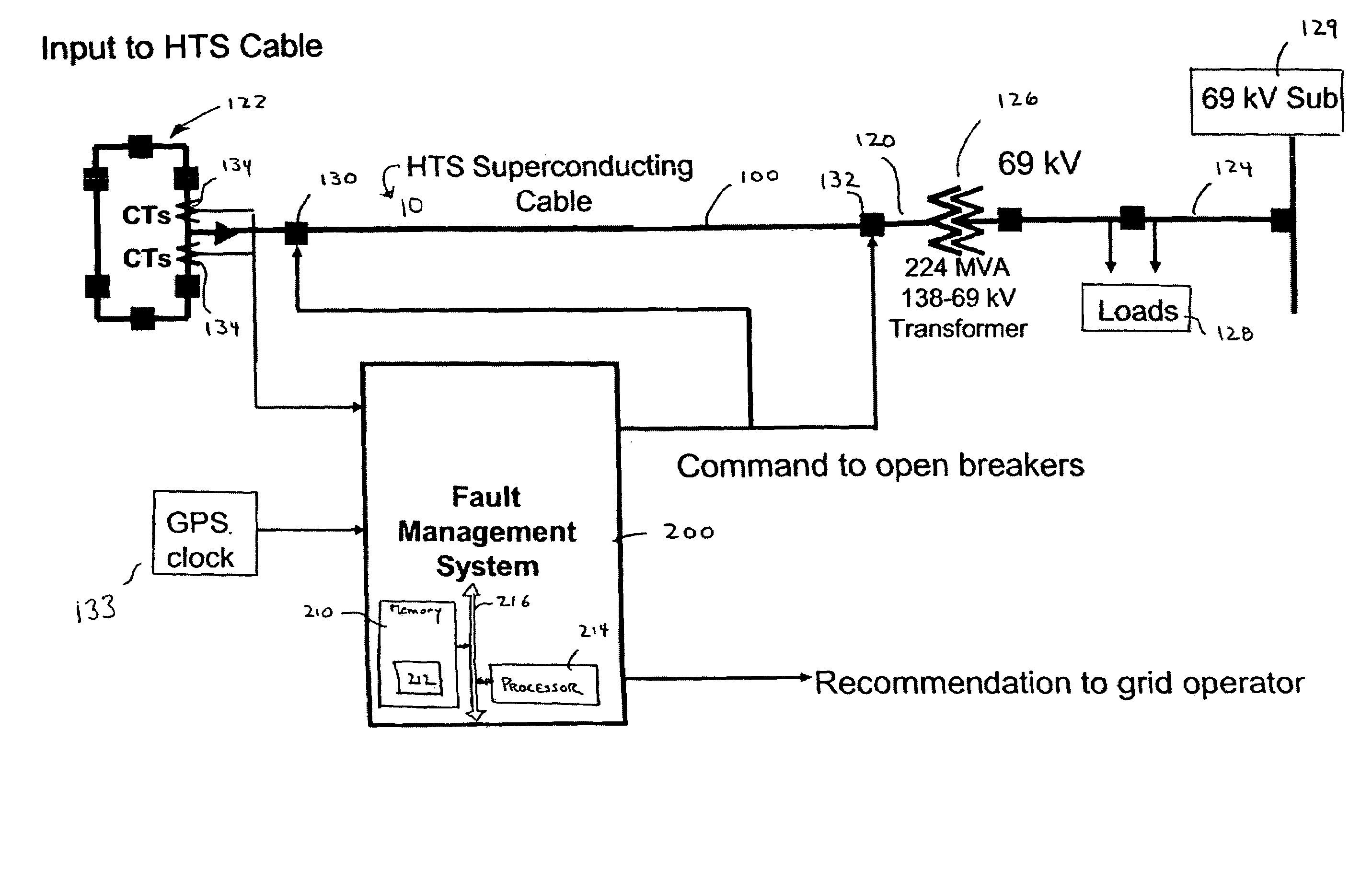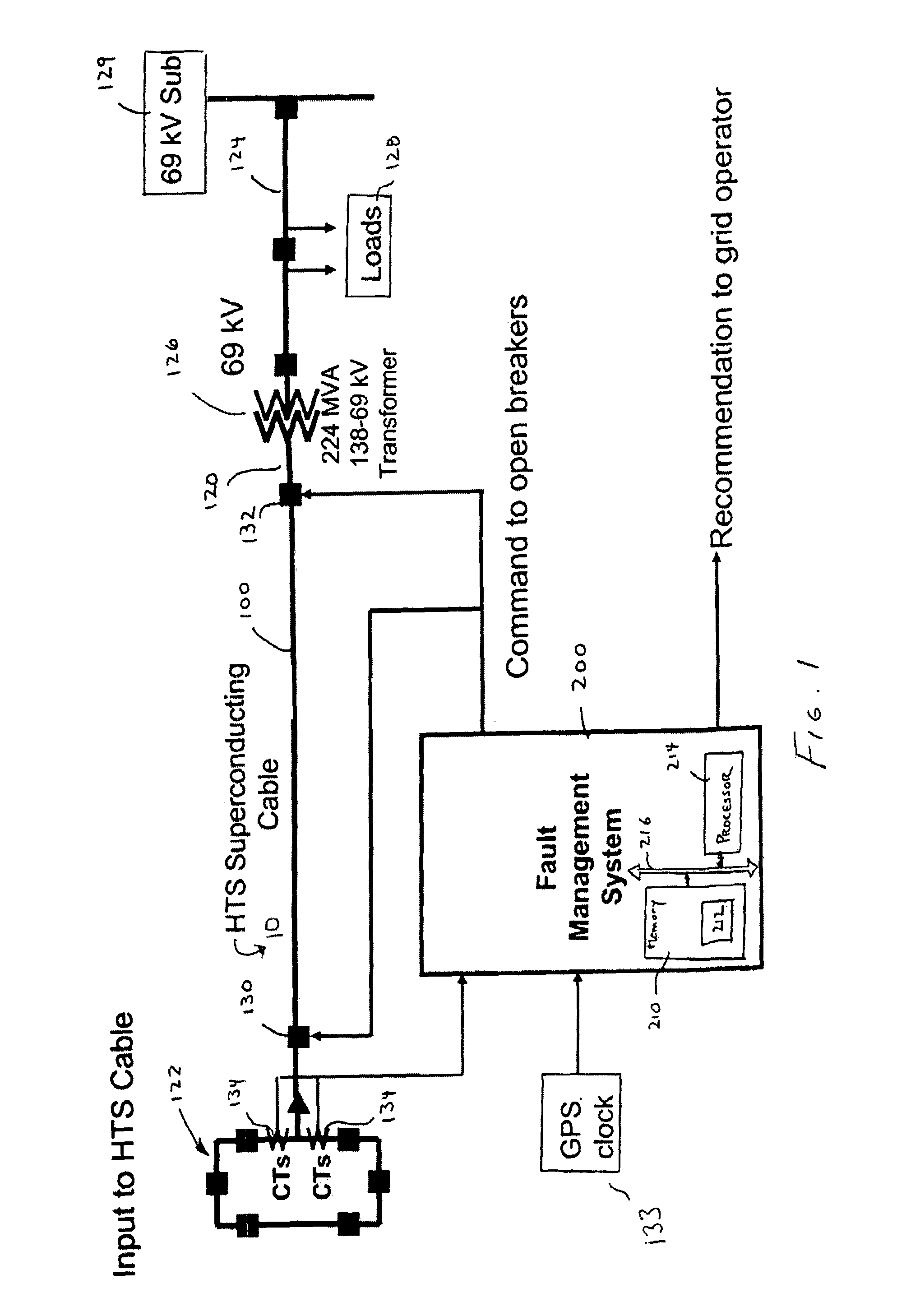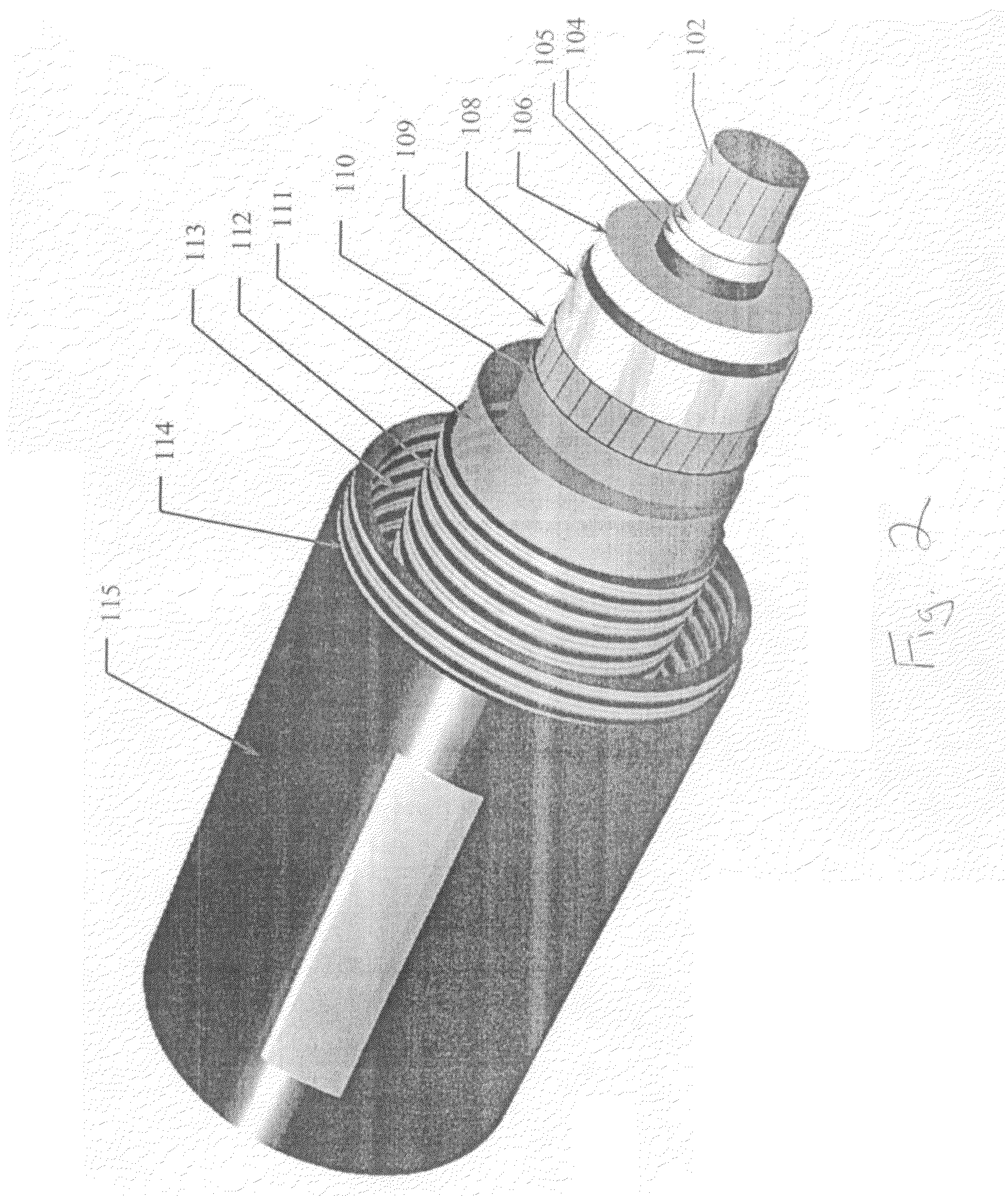Fault management of high temperture superconductor cable
a superconductor cable and fault management technology, applied in the field of fault management of high temperture superconductor cables, can solve the problems of voltage collapse, affecting the distribution of power throughout the network, and reducing the energy available for distribution throughout other areas
- Summary
- Abstract
- Description
- Claims
- Application Information
AI Technical Summary
Benefits of technology
Problems solved by technology
Method used
Image
Examples
Embodiment Construction
[0020]Referring to FIG. 1, a high temperature superconductor (HTS) cable 100 is shown connected within a portion of a utility power grid 10. HTS cable 100 has a length here of several hundred meters and provides a relatively high current and low resistance electrical path while occupying a fraction of the space required by a conventional copper cable carrying the same amount of current. As will be discussed in greater detail below, HTS wire used in HTS cable 100 has a design and structure capable of carrying as much as 150 time the electrical current of similar sized copper wire. With a relatively small amount of HTS wire rather than large quantities of copper stranded into the core of an AC cable, three to five times more power can be carried through an equivalent sized line.
[0021]Referring to FIG. 2, HTS cable 100 includes a strand copper core 102 surrounded in radial succession by a first high temperature superconductor layer 104, a second high temperature superconductor layer 10...
PUM
 Login to View More
Login to View More Abstract
Description
Claims
Application Information
 Login to View More
Login to View More - R&D
- Intellectual Property
- Life Sciences
- Materials
- Tech Scout
- Unparalleled Data Quality
- Higher Quality Content
- 60% Fewer Hallucinations
Browse by: Latest US Patents, China's latest patents, Technical Efficacy Thesaurus, Application Domain, Technology Topic, Popular Technical Reports.
© 2025 PatSnap. All rights reserved.Legal|Privacy policy|Modern Slavery Act Transparency Statement|Sitemap|About US| Contact US: help@patsnap.com



